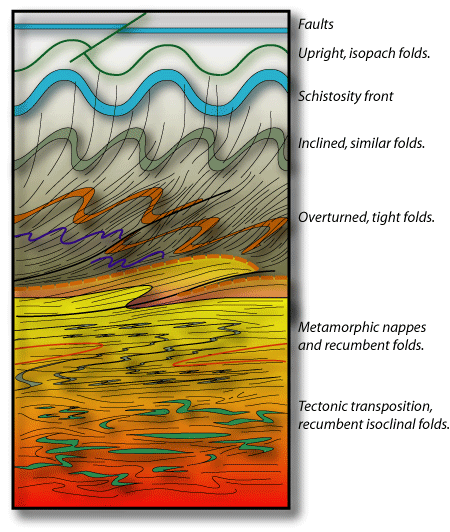|
The concept of structural level is based on the observation that the style of deformation changes with depth due to changes in temperature and confining pressure (overburden). With depth, structures become more pervasive, syn-metamorphic, and sub-horizontal.
The Upper Structural Level (down to a few km depth) is the domain of brittle deformation (faults and fractures), upright isopach folds, extensional fractures and stylolithic joints. Bedding and early fabrics are always recognisable.
The Intermediate Structural Level starts with the schistosity front, where cleavage begins to form. At that level, the style of folding includes: similar folds, tight folds and overturned folds with a strong axial planar schistosity. Pressure solution is the dominant cleavage-forming mechanism, quartz veins testify for hydraulic fracturing. Ductile deformation dominates over fracturing. Metamorphic grade does not exceed the greenschits, to mid-amphibolite facies.
In the Lower Structural Level the style of deformation style includes: metamorphic nappes, large scale recumbent folds and ductile shear zones. Deformation is intense and pervasive, tectonic transposition makes the mapping of early fabric difficult if not impossible, fabrics are sub-horizontal. Metamorphic grades ranges from amphibolite facies to granulite facies, and partial melting is often present. |
|
 |
|